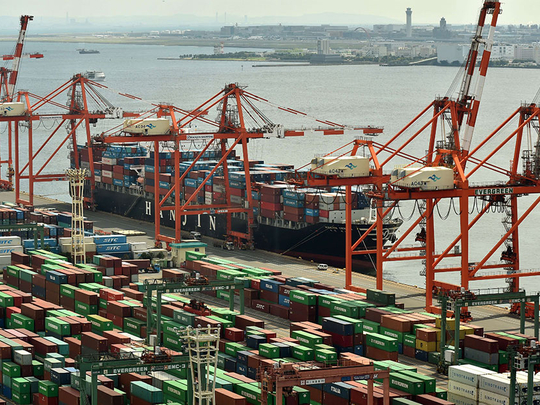
Washington: A 12-nation Pacific trade deal cements President Barack Obama’s strategic pivot toward Asia and challenges China to accept US-backed rules for doing business.
A trading bloc stretching from Chile to Japan, with the United States at the economic center, bolsters Obama’s effort to counter growing Chinese military and economic influence in the Pacific. The agreement, reached Monday in Atlanta, also strengthens the president’s diplomatic hand as he travels to Asia next month for meetings with regional leaders.
More than that, the deal means the US now has closer trading partners — and closer friends — in the region. That may force China to live up to the deal’s standards or else be cut from some of the resulting economic growth.
“American influence in Asia has long been based on our economic strength and admiration of our economic system,” said Jeffrey Bader, a former Obama adviser on Asia policy and now a visiting scholar at the Brookings Institution in Washington. The trade deal “binds countries more closely and makes economic interdependence more of a reality.”
Largest trade pact
If ratified, the Trans-Pacific Partnership would be the largest pact governing international commerce in more than two decades, encompassing 40 per cent of the world’s economic output. The deal would set new precedents for breaking down subtle, politically entrenched barriers to trade and would reinvigorate an expansion of global commerce.
The trade pact would eliminate more than 18,000 taxes on US products and includes enforceable labor and environmental standards, Obama said in a statement.
“When more than 95 per cent of our potential customers live outside our borders, we can’t let countries like China write the rules of the global economy,” Obama said.
“The US is back in the driver’s seat with trade in a way that it hasn’t been for more than two decades,” said Edward Alden, a senior fellow at the Council on Foreign Relations in Washington. “It really does reassert a strong US role in the trading system.”
China remains the world’s second-largest economy and its role as Asia’s dominant commercial force won’t diminish, despite a slowdown in growth that has roiled its financial markets this year.
President Xi Jinping has moved to enhance his nation’s economic influence, including by establishing the Asian Infrastructure Investment Bank, which has attracted participation from more than 50 countries.
China not a party
While China is not a party to the Trans-Pacific Partnership, the participation of so many of its trading partners and neighbors — including Japan, Malaysia and Vietnam — raises pressure on Xi and his government to accept its standards.
The pact would require stronger intellectual property protections for drug companies and easier access to foreign markets for financial services firms and telecommunications companies, among other provisions.
“The Chinese are studying very carefully the pros and cons of participation in TPP,” said Jeffrey Schott, senior fellow at the Peterson Institute for International Economics and a former US trade negotiator.
A shift in US strategic focus toward Asia has been a centrepiece of Obama’s foreign policy. His administration considered the Asia-Pacific trade pact critical to that strategy; Defence Secretary Ashton Carter even said he’d prefer the agreement over another aircraft carrier in the Pacific.
Domestically, the Asia-Pacific deal confirms the triumph of free-trade supporters over labor unions and critics of globalisation within the Democratic party. Obama becomes the second Democratic president in a row to achieve a major free- trade deal in his presidency.
President Bill Clinton oversaw ratification of the 1993 North American Free Trade Agreement and the Uruguay Round international trade agreement in 1994.
Obama has cast the Trans-Pacific Partnership partly as a re-write of Nafta, which has been blamed by many Democrats for an erosion of US manufacturing jobs.
Nafta participants Mexico and Canada are also parties to the Asia-Pacific deal, whose terms would supersede the earlier pact if it is enacted.












